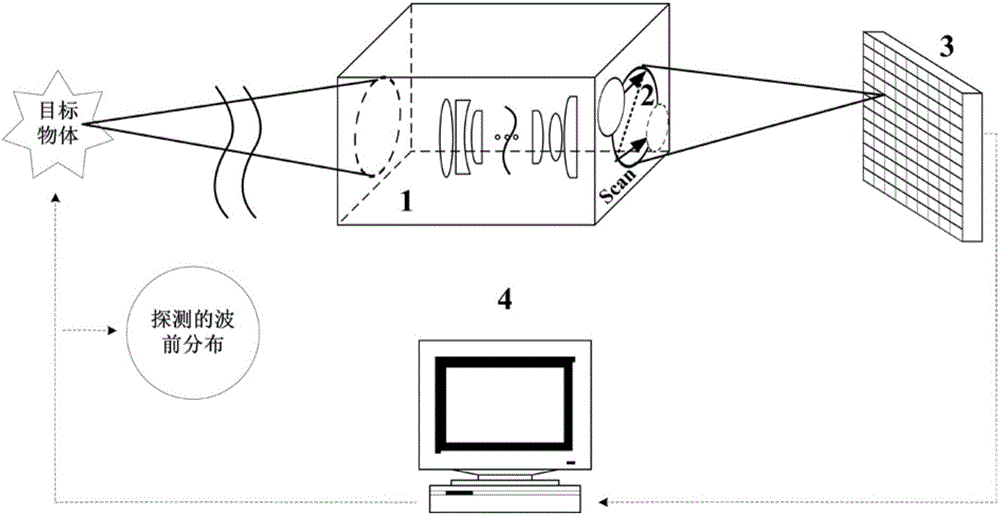Laminated scanning based phase-difference wavefront detection and image restoration method
A technology of wavefront detection and phase difference, which is applied in the direction of measuring devices, measurement optics, optical radiation measurement, etc., can solve the problem of increasing system volume, complexity and cost, affecting the restoration accuracy of phase difference algorithm, and affecting the restoration image of wavefront detection accuracy Quality and other issues, to achieve the effect of improving the wavefront detection ability
- Summary
- Abstract
- Description
- Claims
- Application Information
AI Technical Summary
Problems solved by technology
Method used
Image
Examples
Embodiment
[0046] The optical system based on the new method of wavefront detection and image restoration of the present invention is composed of an imaging system 1, a spatial modulation unit 2, an image sensor 3 and a computer 4. The working principle of the whole system is as follows figure 1 Shown:
[0047] Its specific working process is:
[0048] (1) Translating the small-aperture diaphragm in the pupil plane of the imaging system 1 in a stacked scanning manner. stack scan as figure 2 As shown in Fig. 1 , the small-aperture diaphragm used for scanning is sequentially translated by a certain distance in the two-dimensional pupil plane to complete the modulation, and to ensure that there is a certain overlap in the area scanned by the diaphragm on the pupil plane between adjacent translation positions. The stack scanning is completed by the spatial modulation unit 2, which can be a mechanical mobile platform, or a fast modulation device such as a digital micromirror device (Digita...
PUM
 Login to View More
Login to View More Abstract
Description
Claims
Application Information
 Login to View More
Login to View More - R&D
- Intellectual Property
- Life Sciences
- Materials
- Tech Scout
- Unparalleled Data Quality
- Higher Quality Content
- 60% Fewer Hallucinations
Browse by: Latest US Patents, China's latest patents, Technical Efficacy Thesaurus, Application Domain, Technology Topic, Popular Technical Reports.
© 2025 PatSnap. All rights reserved.Legal|Privacy policy|Modern Slavery Act Transparency Statement|Sitemap|About US| Contact US: help@patsnap.com



